Ed Gorman's Blog, page 29
July 27, 2015
Bill Haley’s foundational role in American popular music is often overlooked. The New Yorker

From the New Yorker go here for the entire great article http://www.newyorker.com/culture/cult...BY DAVID CANTWELL Bill Haley’s foundational role in American popular music is often overlooked.
You’ve seen this one before: the kids are at a nightclub or a soda shop, or maybe in a gymnasium. They’re dancing, energetically and all-smiles, to beat-heavy music. Adults are present as well—parents or teachers, usually, but they could be rich, stuffy old men in tuxedos and monocles. They are not smiling. Indeed, they are shocked and offended by kids these days—by their footloose dancing and wild, loud music most of all. Then, unexpectedly, one of the oldsters begins to smile, to tap a foot, and then to dance goofily in place, seemingly powerless before this new and forbidden fun. This lasts only a moment, though: pruned stares and I-nevers swiftly marshal the offender back to his or her staid station. Sometimes, peer pressure isn’t even necessary. The dancing adults simply regain self-consciousness—what’s wrong with me?—before furtively glancing about to confirm that no one saw them acting the fool.
This scene, witnessed countless times in movies and on television and maybe even now and then in real life, enacts the way that fresh freedom sneaks up on us, tumbling out of us spontaneously, like laughter, moving us strangely but joyously to rhythms and melodies we’ve never known. The music that inspires these scenes is almost always rock and roll, or one of its descendants, and the responses to its appeal, whether youthful enthusiasm or stodgy but humorously framed hostility, embody the erosion of resistance to new worlds. Moving to the beat, our bodies briefly become these worlds. “Free your mind and your ass will follow,” the funk master George Clinton insisted (as did, later, En Vogue). But such emblematic rock-and-roll set pieces know that freedom emerges the other way around at least as often—and that its great leaps forward are often followed by prudent retreats.
A similarly decorum-smashing interlude occurred on the radio sixty years ago this month: “(We’re Gonna) Rock Around the Clock” by Bill Haley & His Comets, 1955’s song of the summer, became the first rock-and-roll record to top the Billboard “Best Sellers” pop chart (in the two weeks following, it also topped the magazine’s “Most Played on Jukeboxes” and “Most Played by Jockeys” charts). The first half of 1955 had seen chart-toppers typical of the post-Second World War, pre-rock-and-roll era: the McGuire Sisters’ ”Sincerely” and the Fontane Sisters’ ”Hearts of Stone,” sped-up but otherwise entirely Your Hit Parade-styled versions of R. & B. hits from, respectively, the Moonglows and the Charms; Perez Prado’s cool and sexy “Cherry Pink (and Apple Blossom White),” a cha-cha instrumental that would go down as the year’s biggest chart hit; and Bill Hayes’s slight but enduringly catchy novelty “The Ballad of Davy Crockett.” Each of these recordings was charming and fun, in its own familiar fashion.
Then, unexpectedly: “One, two, THREE o’clock, four o’clock ROCK.” Tension is built as drums smash and the countdown proceeds. Tension is released when a light-on-its feet but herd-driving swing rhythm takes over. Haley, an extraordinarily ordinary-voiced singer, is telling his girl to put her “glad rags on,” they’re going to rock through the night to a crazy new sound. This sound. The Comet Danny Cedrone plays a hypertensive electric-guitar solo that squeals and vibrates and is pure, beautiful noise. Joey D’Ambrosio, on saxophone, blats his simple line on repeat as if he’s only this moment learned to play. Everything—the chanted lyric, the acoustic guitar, the slapped bass, the skittering drums, and (a reminder of the group’s country-and-Western origins) the “lightning strike” pedal-steel guitar—are all about the beat, the beat, the beat. Like nothing else on pop radio, Haley’s call to his girl is experienced collectively, a generation’s imperative to move.
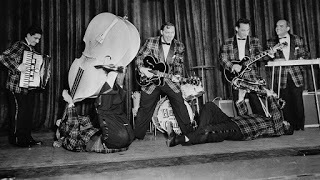
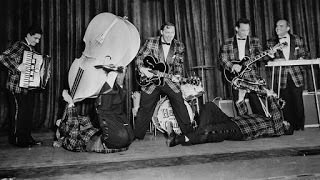
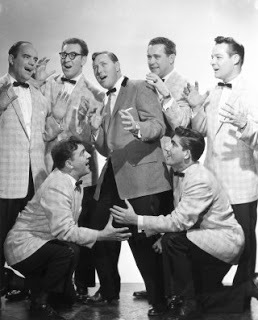
Mystery Scene Back Issue #140, Summer 2015 (Canada)
 Ingrid Thoft" by Hank Phillippi Ryan"Elizabeth Daly: East Side Stories" the urbane and amiable Henry Gamadge, by Joseph Goodrich"Ronald Tierney" an appreciation of the Deets Shanahan novels, by Kevin Burton Smith"Pen Pals: Eudora Welty and Ross Macdonald," a new collection of letters, by Jon L. Breenby Jake Hinkson"Gormania: A chat with John Lutz" by Ed Gorman"Marlowe Framed!" Comic book adaptations of Raymond Chandler’s iconic private eye, by Dick Lochte"An Expert Witness" Crossword, by Verna Suit"My Book: Between the Covers" by Elaine Viets"My Book: Burnt Siena" by Sarah Wisseman"My Book: Greenfellas" by Robert Lopresti
Ingrid Thoft" by Hank Phillippi Ryan"Elizabeth Daly: East Side Stories" the urbane and amiable Henry Gamadge, by Joseph Goodrich"Ronald Tierney" an appreciation of the Deets Shanahan novels, by Kevin Burton Smith"Pen Pals: Eudora Welty and Ross Macdonald," a new collection of letters, by Jon L. Breenby Jake Hinkson"Gormania: A chat with John Lutz" by Ed Gorman"Marlowe Framed!" Comic book adaptations of Raymond Chandler’s iconic private eye, by Dick Lochte"An Expert Witness" Crossword, by Verna Suit"My Book: Between the Covers" by Elaine Viets"My Book: Burnt Siena" by Sarah Wisseman"My Book: Greenfellas" by Robert Lopresti
Published on July 27, 2015 10:05
July 26, 2015
James Reasoner Forgotten Books: Gun the Dame Down - Gil Brewer
Forgotten Books: Gun the Dame Down - Gil Brewer
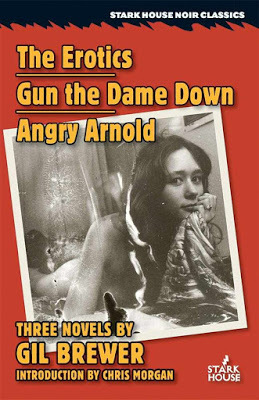
James Reasoner:
This is one of the three previously unpublished novels by Gil Brewer that Stark House is reprinting in a handsome new volume, and while the dates when Brewer wrote the books are unknown, GUN THE DAME DOWN seems very much like a Fifties novel, including that hardboiled title. It's also one of the few private eye novels Brewer ever wrote.
In fact, this book hits so many of the familiar private eye notes that at times it almost reads like a parody of the genre. There's the first-person narrator who's a somewhat seedy private shamus; the rich guy who has both a cheating wife and a beautiful blond nymphomaniac daughter; the private eye's buddy on the police force; the multiple murders; scenes set in squalid fishing camps and roadhouses; the private eye getting hit on the head and knocked out and taken for a ride by colorful but brutal hired goons...Well, you get the idea.
But what makes this stew of the familiar worth reading is that Brewer turns up the heat on it and lets it boil over by playing everything absolutely straight and compressing the action into a short period of time (part of one afternoon and a night). GUN THE DAME DOWN is short, maybe 35,000 words, and it's one of the fastest books you'll ever read. There's always something happening, and private eye Bill Death (yes, that's really his name) is nearly always in danger, whether he realizes it at the time or not. There are great noirish lines like the first one, "I walked into it with my eyes open", and great characters like the beautiful dogwalker Cadillac Smith, who may or may not have some deadly secrets of her own.
Given its length and pace, I'm surprised Brewer wasn't able to sell this book, maybe to Donald Wollheim for one of the Ace Double mysteries. There are several scenes that would have made great cover material for, say, Norman Saunders. But thanks to Stark House, we get to read it anyway. I'll be getting to the other two novels in this volume, but for now, GUN THE DAME DOWN is highly recommended.

James Reasoner:
This is one of the three previously unpublished novels by Gil Brewer that Stark House is reprinting in a handsome new volume, and while the dates when Brewer wrote the books are unknown, GUN THE DAME DOWN seems very much like a Fifties novel, including that hardboiled title. It's also one of the few private eye novels Brewer ever wrote.
In fact, this book hits so many of the familiar private eye notes that at times it almost reads like a parody of the genre. There's the first-person narrator who's a somewhat seedy private shamus; the rich guy who has both a cheating wife and a beautiful blond nymphomaniac daughter; the private eye's buddy on the police force; the multiple murders; scenes set in squalid fishing camps and roadhouses; the private eye getting hit on the head and knocked out and taken for a ride by colorful but brutal hired goons...Well, you get the idea.
But what makes this stew of the familiar worth reading is that Brewer turns up the heat on it and lets it boil over by playing everything absolutely straight and compressing the action into a short period of time (part of one afternoon and a night). GUN THE DAME DOWN is short, maybe 35,000 words, and it's one of the fastest books you'll ever read. There's always something happening, and private eye Bill Death (yes, that's really his name) is nearly always in danger, whether he realizes it at the time or not. There are great noirish lines like the first one, "I walked into it with my eyes open", and great characters like the beautiful dogwalker Cadillac Smith, who may or may not have some deadly secrets of her own.
Given its length and pace, I'm surprised Brewer wasn't able to sell this book, maybe to Donald Wollheim for one of the Ace Double mysteries. There are several scenes that would have made great cover material for, say, Norman Saunders. But thanks to Stark House, we get to read it anyway. I'll be getting to the other two novels in this volume, but for now, GUN THE DAME DOWN is highly recommended.
Published on July 26, 2015 08:08
July 25, 2015
Bud Flannagan--who?
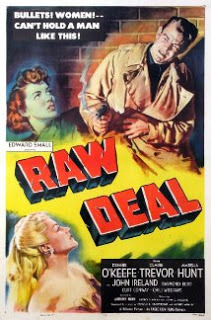
SUNDAY, DECEMBER 24, 2006Bud Flannagan--who?First printed Friday, November 11, 2005
Bud Flannagn
Who?
If you remember hm at all, you remember him under his stage name Dennis O'Keefe. He spent much of his career being called the road show Cary Grant. He was handsome enough, I suppose but he lacked Grant's ease with himself. He was a tall lanky troubled Mick whom you could easily imagine had a taste for the bourbon. And a few punches thrown in the parking lot after a night's imbibing.
I thought of him today because by accident I picked up an old copy of Mystery Scene that carried a two page list of overlooked but memorable noirs. O'Keefe a/k/a Bud Flannagan appeared in four of twenty of them.
Iowans were always curious about him because he grew up here. He survived his first decade in Hwood by doing just about everything, writing, dancing, directing plays at various small L.A. Theatres. His break came when he started doing the Grant-influenced stuff in what proved to be about two decades worth of B-movies, most of them comedies that won him excellent reviews and a decent living. He was an affable, even occasionally silly screen presence just like Grant but there wa always that hint of anger he couldn't quite hide even when he played it as simple frustration.
He never broke through, though he had a season of starring in his own TV sit-com and doing third billed roles in a few A pictures.
What he is remembered for by cult devotees today are his film noirs, especially the two directed by Anthony Mann. An unpopular confession here--despite O'Keefe's excellent performance, T-Men has always seemed tedious to me. I can admire what Mann did with it but somehow it never catches fire for me.
Raw Deal, on the other hand, is in my top ten noirs. O'Keefe is older, heavier and meaner. He seems more comfortable in this part than any I've ever seen him in. He's not a typical bad guy--he's dangerous in the Lawrence Tierney way (speaking of Mick drunks). And Mann plays him off beautifully against the women who love him--the good woman (Marsha Hunt) and the floozy (Claire Trevor)--in exemplary style.
Mann has never used his B-movie stock company better. Here you find Claire Trevor, Marsha Hunt, John Ireland and Raymond Burr giving ruthless performances. But the movie is driven by the reckless, obsessive rage of O'Keefe. His IMBD credits list runs to seven pages--a long, long career. But this is the best of his career.
The reviewer for IMBD liked the film as much as I do:
Folks can go on and on about a visual style. The fact is, RAW DEAL exemplifies more than just an atmosphere. There's a catalyst for horrific violence driven by the desperation of the characters, their psychosis and their inability to escape from the choking shadows not only around them, but inside their heads. This movie, a cheap b-production with only one actor with stand-out talent, Claire Trevor, and a young powerful Raymond Burr, manages to seem authentic all the way through because it doesn't hold back on the violence or the threat of violence. There's a desperate prison escape, by hero O'Keefe, who's trying to get to Burr the crime boss, for whom he took a fall. Burr wants O'Keefe dead so he doesn't have to worry about O'Keefe ratting on him. O'Keefe uses two women he knows, his floozy Trevor and the good-girl counselor he really loves (she's cast in light and draws him like a moth) as cover. The movie then follows O'Keefe as he does a mini-FUGITIVE, like the television show, making love to his women and encountering a raging lunatic in the woods who doesn't have anything to do with him, but might get O'Keefe caught anyway by swarming police on the hunt for the maniac.
In this rough noir, you get a suicide by cop, a guy fighting not to get his face impaled on a set of wall antlers, a flaming friccasee thrown in a drunk woman's face, a nasty deception and the good girl getting tortured, and a bloody final encounter between psycho Burr and O'Keefe, with plenty of face-ripping and falling from burning buildings. That's not standard stuff, and if you can get into babe Trevor with light shimmering on her lips as she tries to figure out how to save her thug O'Keefe from the police, Burr, and the younger angel ready to steal him away, then you will enjoy hell out of this film.
posted by Gormania at 4:18 PM 1 comments
POSTED BY ED GORMAN AT 6
Published on July 25, 2015 19:29
sex photo of the day
Published on July 25, 2015 12:45
July 24, 2015
The Blonde by Duane Swierczynski
SUNDAY, DECEMBER 16, 2007
In Downtown the hapless protagonist endures an unending series of con jobs and con artists on a winry Christmas Eve. In The Blonde journalist Jack Eisley meets his own kind of con artist, the lovely Kelly White of the title, who doses Eisley with the McGuffin that sets everything in motion, including a government agent straight out of Bring Me The Head of Alfredo Garcia. All on a single night in Philadelphia.
Swierczynski gets better every time out and his handling of what amounts to screwball spy fiction is masterful. The story keeps you flipping the pages, the characters are believable and unique and the construction extraordinary. Swierczynski really understands how to set up, pace and pay off a scene. One more thing he shares with the late McBain.
The Blonde is a straight shot of pure pleasure. You'll like it, too.POSTED BY ED GORMAN AT 2:31 PM 2 COMMENTS: LINKS TO THIS POST

Published on July 24, 2015 11:44
July 23, 2015
Revisiting ‘Deadwood,’ a Lawless Prelude to TV’s New Golden Age By ALESSANDRA STANLEY
Revisiting ‘Deadwood,’ a Lawless Prelude to TV’s New Golden AgeBy ALESSANDRA STANLEYJULY 21, 2015
Photo

CreditTim Robinson
Ed here: This was one of the finest series ever put on our TV screens. This was the antidote to all the John Ford hokum so beloved by the American John Wayne public. My favorite criticism of it was that it was "political." Duh. That was the point. Between Eastern money (railroads, oil, baking, real estate) and a vastly crooked "justice" system the real old west was as crooked as today's America. Thanks to such writer-directors as the great Walter Hill the show depicted this corruption brilliantly.Alessandra Stanley:After watching the pilot episode of “Deadwood,” I got up, lowered the blinds, dimmed the lights and burned through the rest of the DVD in a fugue of wonder and excitement. I didn’t leave the series until the next day, staggering limply into the harsh sunlight like Ray Milland in “The Lost Weekend.”It was 2004, and I had been the chief television critic at The New York Times for about a year. HBO had sent me advance screeners of its new western. And I was discovering binge watching.There are dramas that are arguably better or more widely appreciated than “Deadwood”: “The Sopranos,” “The Wire” or “Breaking Bad.” But of all the shows I have reviewed over the past 12 years, “Deadwood” is the one I would most like to see again for the first time.In that first jolt of surprise and enthrallment, it felt as if David Milch had created “Deadwood” just for me — I’ve always loved westerns — twisting the genre to invent something new. I wrote at the time that westerns were like men’s clothes or formal poetry: There is a certain liberty in their constraints, and some limitations inspire creativity. “Deadwood” turned out to be a television sonnet with a hip-hop beat.
Photo
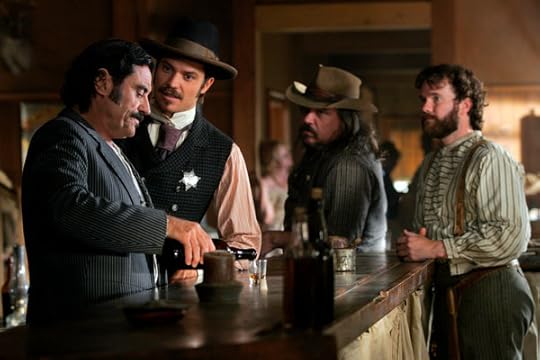
From left, Ian McShane, Timothy Olyphant, W. Earl Brown and Sean Bridgers in “Deadwood.” CreditDoug Hyun/HBO
Before “Mad Men” or “The Americans” found new ways to reclaim the past, this was a period piece ahead of its time, a modern drama set during the Dakota gold rush of the 1870s. A grim, washed-out palette of sepia and gray replaced the familiar Technicolor panoramas of John Ford westerns.This depiction of the West was sophisticated and deeply layered, sometimes comical but always brutal. Fetid, crowded, filthy Deadwood wasn’t just primitive — it was primal. Murdered men were fed to pigs. Sex in the brothels was almost as callous.
Continue reading the main storyVideo via YouTube
The characters spoke a new language, too, an incongruous mix of poetry and profanity that hasn’t been matched by any other show, not even the first season of “True Detective.” Mr. Milch spiked the commonplace blasphemy of the 1870s with obscenities so crude they would make rappers flinch.But threaded through the spew of swear words would be sudden flights of near-Shakespearean eloquence. Comforting a slighted henchman, the town pimp and saloonkeeper, Al Swearengen (Ian McShane), was soothing: “Whatever lurks ahead, whatever grievous abominations and discord, you and me walk into it together, like always.”Fans of the show — and I was one of the first — fell in love with Swearengen, the murderous, devious and world-weary Old West mob boss. The show had a putative hero, Seth Bullock (Timothy Olyphant), a former marshal turned shopkeeper, but Swearengen was the real star, a complicated, beguiling antihero high in the pantheon of the so-called difficult men of television’s second Golden Age.
Photo
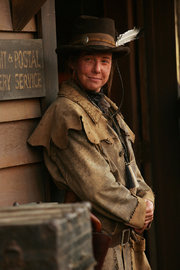
Robin Weigert in "Deadwood."CreditJohn P. Johnson/HBO Continue reading the main story136 COMMENTSCritics for The Times are writing about the cultural works they wish they could experience again for the first time. If you could binge watch a TV series all over again, what would it be and why?Share your thoughts »
I was even more smitten with Calamity Jane (Robin Weigert), the profane and drunken sidekick to Wild Bill Hickok (Keith Carradine) — both historical figures reimagined by Mr. Milch. Jane dressed, drank, cursed and fought like a man, but when she looked at Wild Bill, her face softened with a spinsterish yearning that was heartbreaking. Then someone else would speak up and she would snap back to her usual snarling, bullying self.AdvertisementContinue reading the main storyDeadwood was lawless territory, which was interesting because Mr. Milch cut his teeth on “Hill Street Blues” and “NYPD Blue,” the kind of contemporary cop shows that eventually all but killed the TV western. It seemed fitting that he would pay reparations by riffing on frontier lawlessness and disorder. In a 2004 interview, he told the journalist Ned Martel that he wanted to explore the “primordial ooze” of law enforcement. In Deadwood, the closest thing to justice was revenge with peer review.
Photo
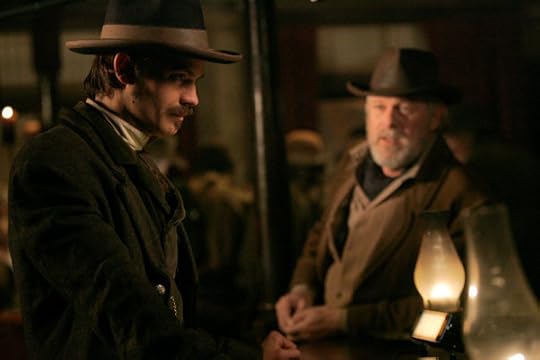
Mr. Olyphant with Gerald McRaney in the third season of "Deadwood." CreditDoug Hyun/HBO
Mr. Milch has a complicated history, and his next two shows for HBO, “John From Cincinnati” and the ill-fated “Luck,” were astonishingly flawed. But I admire his unsteadiness almost as much as I respect the more consistent brilliance of David Chase or Vince Gilligan. Mr. Milch’s ambitious, anarchic flops make the success of “Deadwood” all the more miraculous. The series reached the flash point of creativity, talent and audacity needed for truly great television.
Continue reading the main storyRECENT COMMENTS
Mark 3 minutes agoHas a student of history I was as fascinated with the American frontier more than anything else. Like war it was a period of sudden violence...HighPlainsScribe 13 minutes agoThe first four episodes and the finales of the first two seasons rank with the best videographed/filmed drama ever, whether television or...Lindah 15 minutes agoI missed Deadwood when it was all the rage, but bought the boxed video set over a year ago. No binge watching for me; I've savored each...SEE ALL COMMENTS WRITE A COMMENT
And, on reflection, “Deadwood” was more than than an exemplar of its era; it also served as a fitting metaphor for our time. Once the Internet took hold, TV turned almost as lawless as the Black Hills, a gold-rush medium of ruthless prospectors, few rules and infinite potential.But even “Deadwood” settled down and turned civic-minded by Season 2. Television may still be plagued by illegal streaming. But in the end, the Internet didn’t exterminate the networks, it just changed the way we watch their shows.I came to the critic’s job from the news side, and I spent my early days focused on television coverage of the Iraq war and the 2004 election. Reality TV was the other hot topic when I started, even if most of those shows — “The Osbournes,” “The Bachelor,” “Fear Factor” — were more fun to analyze as expressions of the national id than to watch.
Photo

Clockwise from top left, scenes from binge-worthy shows including "Game of Thrones," "The Walking Dead," "Deadwood," "Orange Is the New Black," "Lost" and "Friends."CreditClockwise from top left: Helen Sloan/HBO, Gene Page/AMC, Doug Hyun/HBO, JoJo Whilden for Netflix, Mario Perez/ABC, Warner Brothers
Lots of extraordinary things were already happening on television: “The Sopranos” was still on the air, and so was “The Wire.” Broadcast networks and HBO were the mainstays, with FX and Showtime learning to take risks.CONTINUE READING THE MAIN STORY136COMMENTS
Then shows like “Damages,” “Homeland” and “The Americans” started breaking through, and suddenly we were in a new age of exploration. One pleasure of being a critic was navigating the global reach that Netflix and other streaming sites brought to American viewers; it was exhilarating to discover foreign shows like “Forbrydelsen,” “Borgen” and “Spiral.”When I asked for the job, some of my colleagues were surprised, and a few could barely disguise their contempt for the medium, asking me pityingly how I could bear to watch all that junk. Twelve years later, the same people excitedly lobby me on behalf of new shows they have discovered. (If anything, it’s now the film critics they pity.)“Deadwood” lasted for three seasons. But today those episodes are always within instant reach, on HBO Go and other places, and my viewing time, since I am leaving the beat, is now my own. Paradoxically, one of the rewards for not being a television critic is that you get to watch more television: Now I can stream “Deadwood” whenever I want, however I want.
A version of this article appears in print on July 22, 2015, on page C1 of the New York edition with the headline: Harking to TV’s Call of the Wild. | Today's Paper|S
Published on July 23, 2015 12:34
July 22, 2015
Gravetapping: Publicity Push: Axel Brand's Joe Sonntag Novels
WEDNESDAY, JULY 22, 2015Gravetapping: Publicity Push: Axel Brand's Joe Sonntag NovelsWhile Mr. Wheeler is primarily a writer of historical Western novels, he has also written five novels featuring Milwaukee homicide detective Lieutenant Joe Sonntag as by Axel Brand. The setting is historical—1940s Milwaukee—but the plots are criminal. The series has received critical praise—
“[Brand’s] noir style effectively combines muscle and cheek, and Sonntag is an appealing laconic sleuth.” –Kirkus Reviews on The Hotel Dick
“[ The Dead Genius is] buoyed by Brand’s crisp prose and Sonntag’s reflexive wisecracks.” –Kirkus Reviewson The Dead Genius
Crossroad Press has recently—over the past few months—reissued all five of the Joe Sonntag novels in ebook form, and you may want to try one. The novels are below—if you click the title you will be transported to each book’s Amazon page—with the publisher’s brief description and the first paragraph from each novel. I particularly like the first few lines of The Hotel Dick.
 The Hotel Dick
.
The Hotel Dick
.
Publisher’s Description : “It’s 1948 Milwaukee. The Lakeshore Towers Hotel house detective, J. Adam Bark, is murdered while sitting in a barber's chair. Homicide detective Lieutenant Joe Sonntag is sent to investigate, but has a difficult time with the barber’s insistence that Spencer Tracy killed Bark.”
First paragraph : “Joe Sonntag knew the victim this time. He never liked the man and wasn’t surprised that someone put a bullet through his mouth and another through his heart. There would be maybe two hundred suspects.”
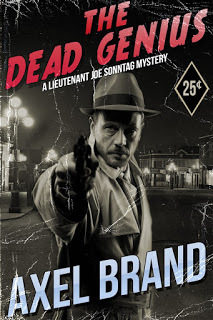 The Dead Genius
.
The Dead Genius
.
Publisher’s description : “Armand de Trouville is dead. The little genius pioneered a new field, forensic document examination. Thanks to Trouville, forgers and people who write fake wills and stickup men who pass notes to bank cashiers are in jail.”
First paragraph : “The death notice in the Milwaukee Journal announced the visiting hours. Joe Sonntag thought he could manage it during his lunch break because the mortuary was only six blocks away, and it would be a good day to walk.”
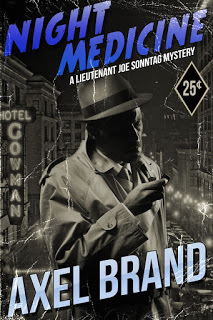 Night Medicine
.
Night Medicine
.
Publisher’s description : “Milwaukee, 1948. Joe Sonntag, ace investigator for the police department, faces a riddle: a lovely young woman is found dead at the zoo, near the lion cages, lying in a bed of ferns. She has been carefully laid out there, her arms folded. Nearby, a lioness prowls her cage. Plainly, whoever put her there cared for her.”
First paragraph : “The body was near the lions. That’s what they told Lieutenant Joe Sonntag when they woke him up early. A young woman had been found dead at the Washington Park Zoo, a few blocks from Sonntag’s house, so the dispatcher had called him.”
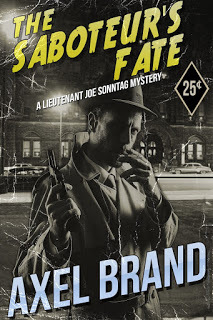 The Saboteur’s Fate
.
The Saboteur’s Fate
.
Publisher’s description : “A violent strike; murder at the factory gates. Milwaukee, 1949. There’s labor turmoil in Beer City. Joe Sonntag gets called to the strike-bound West Allis tractor factory, where a temporary employee has been shot and killed in the middle of the night. The struggle between the Machinists Union and the company has boiled over into murder. But it proves to be more complex than that.”
First paragraph : “The phone knocked the crap out of his beauty sleep. Joe Sonntag staggered out of bed, while Lizbeth stirred, and made his way to the kitchen, where the phone li9ved. It took effort to wake up; he hadn’t slept long, and had been yanked like a marionette out of a peaceful slumber. He flipped on the kitchen light and headed for the upright phone and yanked the receiver off the black stalk.”
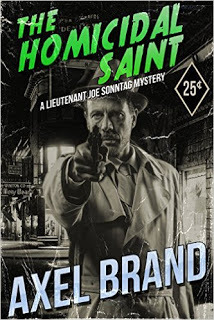 The Homicidal Saint
.
The Homicidal Saint
.
Publisher’s description : “A church potluck dinner. A sudden, shocking murder right after the pastor says grace. Joe Sonntag is a horrified witness, and swiftly arrests Manfred Wittstein, who claims his wife Freda killed their children, Matthew, Mark, Gerta, and Reuben. Thus begins an odd quest to learn why the killer shot Freda, and whether his wife had destroyed their children. It soon proves to be a case unlike any other Sonntag had tackled. The children are, indeed, missing. And no one can say what happened to them.”
First paragraph : “If there was one thing Lieutenant Joe Sonntag dreaded, it was being trapped inside of a church with pious people. He couldn’t help it. He had no use for churches. He wasn’t against them; he just was totally uncomfortable in them. And now he was stuck.” YOU ARE SUBSCRIBED TO EMAIL UPDATES FROM GRAVETAPPING
YOU ARE SUBSCRIBED TO EMAIL UPDATES FROM GRAVETAPPING
TO STOP RECEIVING THESE EMAILS, YOU MAY UNSUBSCRIBE NOW.EMAIL DELIVERY POWERED BY GOOGLEGOOGLE INC., 1600 AMPHITHEATRE PARKWAY, MOUNTAIN VIEW, CA 94043, UNITED STATPOSTED BY ED GORMAN AT 1:14 PM NO COM
“[Brand’s] noir style effectively combines muscle and cheek, and Sonntag is an appealing laconic sleuth.” –Kirkus Reviews on The Hotel Dick
“[ The Dead Genius is] buoyed by Brand’s crisp prose and Sonntag’s reflexive wisecracks.” –Kirkus Reviewson The Dead Genius
Crossroad Press has recently—over the past few months—reissued all five of the Joe Sonntag novels in ebook form, and you may want to try one. The novels are below—if you click the title you will be transported to each book’s Amazon page—with the publisher’s brief description and the first paragraph from each novel. I particularly like the first few lines of The Hotel Dick.
 The Hotel Dick
.
The Hotel Dick
.
Publisher’s Description : “It’s 1948 Milwaukee. The Lakeshore Towers Hotel house detective, J. Adam Bark, is murdered while sitting in a barber's chair. Homicide detective Lieutenant Joe Sonntag is sent to investigate, but has a difficult time with the barber’s insistence that Spencer Tracy killed Bark.”
First paragraph : “Joe Sonntag knew the victim this time. He never liked the man and wasn’t surprised that someone put a bullet through his mouth and another through his heart. There would be maybe two hundred suspects.”
 The Dead Genius
.
The Dead Genius
.
Publisher’s description : “Armand de Trouville is dead. The little genius pioneered a new field, forensic document examination. Thanks to Trouville, forgers and people who write fake wills and stickup men who pass notes to bank cashiers are in jail.”
First paragraph : “The death notice in the Milwaukee Journal announced the visiting hours. Joe Sonntag thought he could manage it during his lunch break because the mortuary was only six blocks away, and it would be a good day to walk.”
 Night Medicine
.
Night Medicine
.
Publisher’s description : “Milwaukee, 1948. Joe Sonntag, ace investigator for the police department, faces a riddle: a lovely young woman is found dead at the zoo, near the lion cages, lying in a bed of ferns. She has been carefully laid out there, her arms folded. Nearby, a lioness prowls her cage. Plainly, whoever put her there cared for her.”
First paragraph : “The body was near the lions. That’s what they told Lieutenant Joe Sonntag when they woke him up early. A young woman had been found dead at the Washington Park Zoo, a few blocks from Sonntag’s house, so the dispatcher had called him.”
 The Saboteur’s Fate
.
The Saboteur’s Fate
.
Publisher’s description : “A violent strike; murder at the factory gates. Milwaukee, 1949. There’s labor turmoil in Beer City. Joe Sonntag gets called to the strike-bound West Allis tractor factory, where a temporary employee has been shot and killed in the middle of the night. The struggle between the Machinists Union and the company has boiled over into murder. But it proves to be more complex than that.”
First paragraph : “The phone knocked the crap out of his beauty sleep. Joe Sonntag staggered out of bed, while Lizbeth stirred, and made his way to the kitchen, where the phone li9ved. It took effort to wake up; he hadn’t slept long, and had been yanked like a marionette out of a peaceful slumber. He flipped on the kitchen light and headed for the upright phone and yanked the receiver off the black stalk.”
 The Homicidal Saint
.
The Homicidal Saint
.
Publisher’s description : “A church potluck dinner. A sudden, shocking murder right after the pastor says grace. Joe Sonntag is a horrified witness, and swiftly arrests Manfred Wittstein, who claims his wife Freda killed their children, Matthew, Mark, Gerta, and Reuben. Thus begins an odd quest to learn why the killer shot Freda, and whether his wife had destroyed their children. It soon proves to be a case unlike any other Sonntag had tackled. The children are, indeed, missing. And no one can say what happened to them.”
First paragraph : “If there was one thing Lieutenant Joe Sonntag dreaded, it was being trapped inside of a church with pious people. He couldn’t help it. He had no use for churches. He wasn’t against them; he just was totally uncomfortable in them. And now he was stuck.”
 YOU ARE SUBSCRIBED TO EMAIL UPDATES FROM GRAVETAPPING
YOU ARE SUBSCRIBED TO EMAIL UPDATES FROM GRAVETAPPINGTO STOP RECEIVING THESE EMAILS, YOU MAY UNSUBSCRIBE NOW.EMAIL DELIVERY POWERED BY GOOGLEGOOGLE INC., 1600 AMPHITHEATRE PARKWAY, MOUNTAIN VIEW, CA 94043, UNITED STATPOSTED BY ED GORMAN AT 1:14 PM NO COM
Published on July 22, 2015 17:58
July 21, 2015
New Book-DRY STONE WALLS Robert J. Randisi
 From Gravetapping and Ben Boulden
From Gravetapping and Ben BouldenTruxton—“My parents named me after a highway sign”—Lewis is a retired NYPD Captain of Detectives. He is a young 62, and using his retirement to travel the United States by housesitting—“Mature Male Available for Housesitting, Non-Smoker, No Pets, Widower.”
Tru gets free lodging, and the traveling homeowners get reassurance their house is safe. Tru is on a job in rural Kentucky when he discovers the nearly lost art of dry stone walls; rock walls with no mortar. Max Beasley, a curmudgeonly old-timer, is the only local mason who still constructs the walls. Max agrees to take Tru as apprentice, but Tru’s job description changes when he arrives at the job site and a portion of the wall has been knocked down, and even more strangely, Max is not there.
It turns out Max is in jail for the murder of a land developer whose body was found beneath the collapsed stones of the wall. Max had refused to sell his property, and the developer tried multiple methods of persuasion, including physical intimidation. Methods Max didn’t like. Tru is convinced Max is innocent of the crime, and he spends the rest of the novel proving it.
Dry Stone Walls is the first in a promising new series. It is a comfortable whodunit rich with dialogue, a likeable protagonist, small-town paranoia—of outsiders like Tru—and a cast of oddball characters; a local Sheriff who allows Max’s temporary escape from county jail, an old woman wanting to help Max get “off the hook,” without “puttin’ [herself] on it!” and a bookkeeper who is a gin rummy prodigy.
The mystery is also good. There is enough going on the keep things interesting; an FBI agent working undercover at the murdered man’s office, and the local residents’ unwillingness to give Tru an honest answer. The killer is identified earlier than expected, but a satisfying twist in the final pages keeps things interesting.
Mystery Scene Back Issue #140, Summer 2015 (Canada)
 Ingrid Thoft" by Hank Phillippi Ryan"Elizabeth Daly: East Side Stories" the urbane and amiable Henry Gamadge, by Joseph Goodrich"Ronald Tierney" an appreciation of the Deets Shanahan novels, by Kevin Burton Smith"Pen Pals: Eudora Welty and Ross Macdonald," a new collection of letters, by Jon L. Breenby Jake Hinkson"Gormania: A chat with John Lutz" by Ed Gorman"Marlowe Framed!" Comic book adaptations of Raymond Chandler’s iconic private eye, by Dick Lochte"An Expert Witness" Crossword, by Verna Suit"My Book: Between the Covers" by Elaine Viets"My Book: Burnt Siena" by Sarah Wisseman"My Book: Greenfellas" by Robert Lopresti
Ingrid Thoft" by Hank Phillippi Ryan"Elizabeth Daly: East Side Stories" the urbane and amiable Henry Gamadge, by Joseph Goodrich"Ronald Tierney" an appreciation of the Deets Shanahan novels, by Kevin Burton Smith"Pen Pals: Eudora Welty and Ross Macdonald," a new collection of letters, by Jon L. Breenby Jake Hinkson"Gormania: A chat with John Lutz" by Ed Gorman"Marlowe Framed!" Comic book adaptations of Raymond Chandler’s iconic private eye, by Dick Lochte"An Expert Witness" Crossword, by Verna Suit"My Book: Between the Covers" by Elaine Viets"My Book: Burnt Siena" by Sarah Wisseman"My Book: Greenfellas" by Robert Lopresti
Published on July 21, 2015 13:23
July 20, 2015
Fast Paced and Expensive Tastes: The Money Trap (1965) BRIAN GREENE
FROM THE GREAT CRIMINAL ELEMENT http://www.criminalelement.com
Fast Paced and Expensive Tastes: The Money Trap (1965)
BRIAN GREENE
Along with Jake Hinkson one of my my two favorite film critics
Glen Ford as NYC Detective Joe Baron
Ed here: For me both this movie and the novel it is based on are the epitome of noir--the man done in by his own foolish deed. But it is far richer than most noir in the both movie and book articulate the misery of a bad marriage and a jealous man. For film fans there's one of Rita Hayworth's last films and a notably sad one because I believe her Alzheimer's had already set in. Her performance here is moving and memorable. If you've never read the novel pick it up. I think it's a major piece and you can certainly see its influence on Donald Westlake. Brian Greene does his usual great job here.Brian Greene:
I’ve written about one of Lionel White’s novels here before ( The Big Caper ), and now I’ve got some thoughts about a film based on one of his books.White is seen by many noir aficionados as a master of the heist story. Stanley Kubrick made the author’s 1955 novel Clean Break into the classic film noir The Killing (1956). Quentin Tarantino credited him as being an inspiration on his 1992 debut film Reservoir Dogs. But caper tales aren’t the only kind of stories White wrote, and The Killing isn’t the only example of a time a film director saw fit to adapt one of his novels for the big screen. Jean-Luc Godard’s avant-garde title Pierrot le fou (1965) is loosely based on White’s 1962 novel Obsession. And there’s an odd, good 1968 movie called The Night of the Following Day that stars Marlon Brando and Rita Moreno, that’s from White’s 1953 book The Snatchers. In addition, there’s another heist film, 1957’s The Big Caper (1957), which shares the title of the White story (1955).Another time a Lionel White novel got made into a film happened when his 1963 book The Money Trap served as the basis of the same-named film from 1965. And this movie is the one I want to bend your ears about now. Because while The Money Trap, which was directed by Burt Kennedy, may not be not on the same quality tier as The Killing, or as groundbreaking as Pierrot le fou, it’s a hell of a good crime film, and it appears to be all but forgotten, if it was ever much known in the first place.The first striking thing about The Money Trap is its heavy-hitting cast: among the stars are Glenn Ford, Elke Sommer, Joseph Cotten, Rita Hayworth, and Ricardo Montalban. The second notable aspect of the film is its compelling premise. The Money Trap involves crime, love, friendship, murder, jealousy, etc., but it is ultimately about, well, money. Ford, who excelled at portraying troubled cops (see The Big Heat), is Joe Baron, a New York homicide detective. All’s going well enough in Baron’s work; it’s his home life where his struggles mainly exist. Baron loves his beautiful, smart wife Lisa (Sommer), and she seems to love him back. The problem is that Lisa has expensive tastes, likes things that can’t be purchased with a policeman’s salary. That’s no problem for her, because she has a trust fund and can buy for herself anything her husband can’t get her. This gnaws at Baron, hurts his ego; he wishes he could take care of his wife and himself without her money coming into it. That’s an old-fashioned, sexist mindset for sure, one that might keep some from feeling sympathetic to Baron’s woes. But, you know, the story was written and filmed at a time when the general expectation was that a man would be the breadwinner in a marriage, so just roll with me here and take the story at face value.
Joe's wife, Lisa (Elke Sommer), has expensive tastes, and Joe has trouble accepting that.
 Another problem for Baron involving his wife is that she has a male friend who’s always hanging around, and this guy is a debonair sort and he has the kind of cash flow more in line with Lisa’s tastes. So you get a sense of where Baron’s head and heart are and you can probably understand his motivation in the story’s big turning point. This comes when Baron and his partner (Montalban) are called to look into a killing that happened in the home of a wealthy doctor who works out of his residence. The doc, portrayed by Cotten, caught a heroin addict trying to rob his home safe and he shot the intruder dead. The big brass at police headquarters sees this as an open and shut case, and they don’t want Baron and his pal to bother the rich doctor much. But the two detectives get interested, anyway, for a couple of reasons. For one, they wonder if there might have been some connection between the deceased junkie and the doctor, some reason why the victim singled out the medic’s home as a place to rob. Second, they learn that there is a large sum of cash on hand in the house. I don’t want to go much deeper into plot description here, but suffice to say that the two cops quickly come to realize that the “respectable” doctor is actually part of an illegal drug smuggling syndicate, and that the addict he killed was someone who worked for him in those kinds of doings. That knowledge, and the matter of the plentiful cash in the doctor’s safe, leads the pair to have a dangerous lightbulb moment: they’re going to do what the dead man tried and failed to do, going to rob the doc’s home and get that money. Baron’s partner has his own reasons for wanting the dough, and we already know why Baron covets it.An important character, in both the book and film, is the dead heroin addict’s former lady friend, Rosalie (last name Kenny in the film and Carver in the book). Played wonderfully by Hayworth in the film, she gives Baron a lot of the information that helps him understand the former associations between the dead man and the doctor. She also makes it known that the doctor is after her and wants her to flee town. In the movie, this woman also happens to be an ex-lover of Baron’s. That’s not the case in the novel, but in both instances Baron is sympathetic to, and charmed by, her in the moment. Hayworth’s character works as a cocktail waitress, one who is equally sexy and modest: a salt of the earth woman who is beautiful and who could be fully pleased by the kind of lifestyle Baron’s earnings can afford. Baron’s new interactions with her occur at a time when he’s about had it with his wife and her upscale desires and her slick boyfriend. Baron feels pulled to Rosalie and she needs him now. And meanwhile there’s the matter of Baron’s and his buddy’s plans to rob the doctor’s house. How’s that for a set of tension-making circumstances?
Another problem for Baron involving his wife is that she has a male friend who’s always hanging around, and this guy is a debonair sort and he has the kind of cash flow more in line with Lisa’s tastes. So you get a sense of where Baron’s head and heart are and you can probably understand his motivation in the story’s big turning point. This comes when Baron and his partner (Montalban) are called to look into a killing that happened in the home of a wealthy doctor who works out of his residence. The doc, portrayed by Cotten, caught a heroin addict trying to rob his home safe and he shot the intruder dead. The big brass at police headquarters sees this as an open and shut case, and they don’t want Baron and his pal to bother the rich doctor much. But the two detectives get interested, anyway, for a couple of reasons. For one, they wonder if there might have been some connection between the deceased junkie and the doctor, some reason why the victim singled out the medic’s home as a place to rob. Second, they learn that there is a large sum of cash on hand in the house. I don’t want to go much deeper into plot description here, but suffice to say that the two cops quickly come to realize that the “respectable” doctor is actually part of an illegal drug smuggling syndicate, and that the addict he killed was someone who worked for him in those kinds of doings. That knowledge, and the matter of the plentiful cash in the doctor’s safe, leads the pair to have a dangerous lightbulb moment: they’re going to do what the dead man tried and failed to do, going to rob the doc’s home and get that money. Baron’s partner has his own reasons for wanting the dough, and we already know why Baron covets it.An important character, in both the book and film, is the dead heroin addict’s former lady friend, Rosalie (last name Kenny in the film and Carver in the book). Played wonderfully by Hayworth in the film, she gives Baron a lot of the information that helps him understand the former associations between the dead man and the doctor. She also makes it known that the doctor is after her and wants her to flee town. In the movie, this woman also happens to be an ex-lover of Baron’s. That’s not the case in the novel, but in both instances Baron is sympathetic to, and charmed by, her in the moment. Hayworth’s character works as a cocktail waitress, one who is equally sexy and modest: a salt of the earth woman who is beautiful and who could be fully pleased by the kind of lifestyle Baron’s earnings can afford. Baron’s new interactions with her occur at a time when he’s about had it with his wife and her upscale desires and her slick boyfriend. Baron feels pulled to Rosalie and she needs him now. And meanwhile there’s the matter of Baron’s and his buddy’s plans to rob the doctor’s house. How’s that for a set of tension-making circumstances?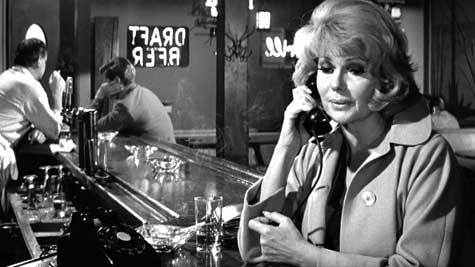
The wonderful Rita Hayworth as Rosalie.
White’s novel that this movie comes from is excellent. If I hadn’t already covered one of his books for my Lost Classics of Noir series here, I’d be tempted to write about it for that. Noir fiction heads should read it, if they haven’t already. And anyone who likes a fine crime film/troubled love story/classic movie with the likes of Ford, Hayworth, Cotten, Sommer, and Montalban in its cast, should look up this film and thank me after.Brian Greene's short stories, personal essays, and writings on books, music, and film have appeared in more than 20 different publications since 2008. His articles on crime fiction have also been published by Crime Time, Paperback Parade, Noir Originals, and Mulholland Books. Brian lives in Durham, NC with his wife Abby, their daughters Violet and Melody, their cat Rita Lee, and too many books. Follow Brian on Twitter @brianjoebrain.See all posts by Brian Greene for Criminal Element.
Mystery Scene Back Issue #140, Summer 2015 (Canada) Ingrid Thoft" by Hank Phillippi Ryan"Elizabeth Daly: East Side Stories" the urbane and amiable Henry Gamadge, by Joseph Goodrich"Ronald Tierney" an appreciation of the Deets Shanahan novels, by Kevin Burton Smith"Pen Pals: Eudora Welty and Ross Macdonald," a new collection of letters, by Jon L. Breenby Jake Hinkson"Gormania: A chat with John Lutz" by Ed Gorman"Marlowe Framed!" Comic book adaptations of Raymond Chandler’s iconic private eye, by Dick Lochte"An Expert Witness" Crossword, by Verna Suit"My Book: Between the Covers" by Elaine Viets"My Book: Burnt Siena" by Sarah Wisseman"My Book: Greenfellas" by Robert LoprestiPOSTED BY ED GORMAN AT 10:41 AM NO COMMENTS: LINKS TO THIS POST
Ingrid Thoft" by Hank Phillippi Ryan"Elizabeth Daly: East Side Stories" the urbane and amiable Henry Gamadge, by Joseph Goodrich"Ronald Tierney" an appreciation of the Deets Shanahan novels, by Kevin Burton Smith"Pen Pals: Eudora Welty and Ross Macdonald," a new collection of letters, by Jon L. Breenby Jake Hinkson"Gormania: A chat with John Lutz" by Ed Gorman"Marlowe Framed!" Comic book adaptations of Raymond Chandler’s iconic private eye, by Dick Lochte"An Expert Witness" Crossword, by Verna Suit"My Book: Between the Covers" by Elaine Viets"My Book: Burnt Siena" by Sarah Wisseman"My Book: Greenfellas" by Robert LoprestiPOSTED BY ED GORMAN AT 10:41 AM NO COMMENTS: LINKS TO THIS POST
ir
Fast Paced and Expensive Tastes: The Money Trap (1965)
BRIAN GREENE
Along with Jake Hinkson one of my my two favorite film critics

Glen Ford as NYC Detective Joe Baron
Ed here: For me both this movie and the novel it is based on are the epitome of noir--the man done in by his own foolish deed. But it is far richer than most noir in the both movie and book articulate the misery of a bad marriage and a jealous man. For film fans there's one of Rita Hayworth's last films and a notably sad one because I believe her Alzheimer's had already set in. Her performance here is moving and memorable. If you've never read the novel pick it up. I think it's a major piece and you can certainly see its influence on Donald Westlake. Brian Greene does his usual great job here.Brian Greene:
I’ve written about one of Lionel White’s novels here before ( The Big Caper ), and now I’ve got some thoughts about a film based on one of his books.White is seen by many noir aficionados as a master of the heist story. Stanley Kubrick made the author’s 1955 novel Clean Break into the classic film noir The Killing (1956). Quentin Tarantino credited him as being an inspiration on his 1992 debut film Reservoir Dogs. But caper tales aren’t the only kind of stories White wrote, and The Killing isn’t the only example of a time a film director saw fit to adapt one of his novels for the big screen. Jean-Luc Godard’s avant-garde title Pierrot le fou (1965) is loosely based on White’s 1962 novel Obsession. And there’s an odd, good 1968 movie called The Night of the Following Day that stars Marlon Brando and Rita Moreno, that’s from White’s 1953 book The Snatchers. In addition, there’s another heist film, 1957’s The Big Caper (1957), which shares the title of the White story (1955).Another time a Lionel White novel got made into a film happened when his 1963 book The Money Trap served as the basis of the same-named film from 1965. And this movie is the one I want to bend your ears about now. Because while The Money Trap, which was directed by Burt Kennedy, may not be not on the same quality tier as The Killing, or as groundbreaking as Pierrot le fou, it’s a hell of a good crime film, and it appears to be all but forgotten, if it was ever much known in the first place.The first striking thing about The Money Trap is its heavy-hitting cast: among the stars are Glenn Ford, Elke Sommer, Joseph Cotten, Rita Hayworth, and Ricardo Montalban. The second notable aspect of the film is its compelling premise. The Money Trap involves crime, love, friendship, murder, jealousy, etc., but it is ultimately about, well, money. Ford, who excelled at portraying troubled cops (see The Big Heat), is Joe Baron, a New York homicide detective. All’s going well enough in Baron’s work; it’s his home life where his struggles mainly exist. Baron loves his beautiful, smart wife Lisa (Sommer), and she seems to love him back. The problem is that Lisa has expensive tastes, likes things that can’t be purchased with a policeman’s salary. That’s no problem for her, because she has a trust fund and can buy for herself anything her husband can’t get her. This gnaws at Baron, hurts his ego; he wishes he could take care of his wife and himself without her money coming into it. That’s an old-fashioned, sexist mindset for sure, one that might keep some from feeling sympathetic to Baron’s woes. But, you know, the story was written and filmed at a time when the general expectation was that a man would be the breadwinner in a marriage, so just roll with me here and take the story at face value.

Joe's wife, Lisa (Elke Sommer), has expensive tastes, and Joe has trouble accepting that.
 Another problem for Baron involving his wife is that she has a male friend who’s always hanging around, and this guy is a debonair sort and he has the kind of cash flow more in line with Lisa’s tastes. So you get a sense of where Baron’s head and heart are and you can probably understand his motivation in the story’s big turning point. This comes when Baron and his partner (Montalban) are called to look into a killing that happened in the home of a wealthy doctor who works out of his residence. The doc, portrayed by Cotten, caught a heroin addict trying to rob his home safe and he shot the intruder dead. The big brass at police headquarters sees this as an open and shut case, and they don’t want Baron and his pal to bother the rich doctor much. But the two detectives get interested, anyway, for a couple of reasons. For one, they wonder if there might have been some connection between the deceased junkie and the doctor, some reason why the victim singled out the medic’s home as a place to rob. Second, they learn that there is a large sum of cash on hand in the house. I don’t want to go much deeper into plot description here, but suffice to say that the two cops quickly come to realize that the “respectable” doctor is actually part of an illegal drug smuggling syndicate, and that the addict he killed was someone who worked for him in those kinds of doings. That knowledge, and the matter of the plentiful cash in the doctor’s safe, leads the pair to have a dangerous lightbulb moment: they’re going to do what the dead man tried and failed to do, going to rob the doc’s home and get that money. Baron’s partner has his own reasons for wanting the dough, and we already know why Baron covets it.An important character, in both the book and film, is the dead heroin addict’s former lady friend, Rosalie (last name Kenny in the film and Carver in the book). Played wonderfully by Hayworth in the film, she gives Baron a lot of the information that helps him understand the former associations between the dead man and the doctor. She also makes it known that the doctor is after her and wants her to flee town. In the movie, this woman also happens to be an ex-lover of Baron’s. That’s not the case in the novel, but in both instances Baron is sympathetic to, and charmed by, her in the moment. Hayworth’s character works as a cocktail waitress, one who is equally sexy and modest: a salt of the earth woman who is beautiful and who could be fully pleased by the kind of lifestyle Baron’s earnings can afford. Baron’s new interactions with her occur at a time when he’s about had it with his wife and her upscale desires and her slick boyfriend. Baron feels pulled to Rosalie and she needs him now. And meanwhile there’s the matter of Baron’s and his buddy’s plans to rob the doctor’s house. How’s that for a set of tension-making circumstances?
Another problem for Baron involving his wife is that she has a male friend who’s always hanging around, and this guy is a debonair sort and he has the kind of cash flow more in line with Lisa’s tastes. So you get a sense of where Baron’s head and heart are and you can probably understand his motivation in the story’s big turning point. This comes when Baron and his partner (Montalban) are called to look into a killing that happened in the home of a wealthy doctor who works out of his residence. The doc, portrayed by Cotten, caught a heroin addict trying to rob his home safe and he shot the intruder dead. The big brass at police headquarters sees this as an open and shut case, and they don’t want Baron and his pal to bother the rich doctor much. But the two detectives get interested, anyway, for a couple of reasons. For one, they wonder if there might have been some connection between the deceased junkie and the doctor, some reason why the victim singled out the medic’s home as a place to rob. Second, they learn that there is a large sum of cash on hand in the house. I don’t want to go much deeper into plot description here, but suffice to say that the two cops quickly come to realize that the “respectable” doctor is actually part of an illegal drug smuggling syndicate, and that the addict he killed was someone who worked for him in those kinds of doings. That knowledge, and the matter of the plentiful cash in the doctor’s safe, leads the pair to have a dangerous lightbulb moment: they’re going to do what the dead man tried and failed to do, going to rob the doc’s home and get that money. Baron’s partner has his own reasons for wanting the dough, and we already know why Baron covets it.An important character, in both the book and film, is the dead heroin addict’s former lady friend, Rosalie (last name Kenny in the film and Carver in the book). Played wonderfully by Hayworth in the film, she gives Baron a lot of the information that helps him understand the former associations between the dead man and the doctor. She also makes it known that the doctor is after her and wants her to flee town. In the movie, this woman also happens to be an ex-lover of Baron’s. That’s not the case in the novel, but in both instances Baron is sympathetic to, and charmed by, her in the moment. Hayworth’s character works as a cocktail waitress, one who is equally sexy and modest: a salt of the earth woman who is beautiful and who could be fully pleased by the kind of lifestyle Baron’s earnings can afford. Baron’s new interactions with her occur at a time when he’s about had it with his wife and her upscale desires and her slick boyfriend. Baron feels pulled to Rosalie and she needs him now. And meanwhile there’s the matter of Baron’s and his buddy’s plans to rob the doctor’s house. How’s that for a set of tension-making circumstances?
The wonderful Rita Hayworth as Rosalie.
White’s novel that this movie comes from is excellent. If I hadn’t already covered one of his books for my Lost Classics of Noir series here, I’d be tempted to write about it for that. Noir fiction heads should read it, if they haven’t already. And anyone who likes a fine crime film/troubled love story/classic movie with the likes of Ford, Hayworth, Cotten, Sommer, and Montalban in its cast, should look up this film and thank me after.Brian Greene's short stories, personal essays, and writings on books, music, and film have appeared in more than 20 different publications since 2008. His articles on crime fiction have also been published by Crime Time, Paperback Parade, Noir Originals, and Mulholland Books. Brian lives in Durham, NC with his wife Abby, their daughters Violet and Melody, their cat Rita Lee, and too many books. Follow Brian on Twitter @brianjoebrain.See all posts by Brian Greene for Criminal Element.
Mystery Scene Back Issue #140, Summer 2015 (Canada)
 Ingrid Thoft" by Hank Phillippi Ryan"Elizabeth Daly: East Side Stories" the urbane and amiable Henry Gamadge, by Joseph Goodrich"Ronald Tierney" an appreciation of the Deets Shanahan novels, by Kevin Burton Smith"Pen Pals: Eudora Welty and Ross Macdonald," a new collection of letters, by Jon L. Breenby Jake Hinkson"Gormania: A chat with John Lutz" by Ed Gorman"Marlowe Framed!" Comic book adaptations of Raymond Chandler’s iconic private eye, by Dick Lochte"An Expert Witness" Crossword, by Verna Suit"My Book: Between the Covers" by Elaine Viets"My Book: Burnt Siena" by Sarah Wisseman"My Book: Greenfellas" by Robert LoprestiPOSTED BY ED GORMAN AT 10:41 AM NO COMMENTS: LINKS TO THIS POST
Ingrid Thoft" by Hank Phillippi Ryan"Elizabeth Daly: East Side Stories" the urbane and amiable Henry Gamadge, by Joseph Goodrich"Ronald Tierney" an appreciation of the Deets Shanahan novels, by Kevin Burton Smith"Pen Pals: Eudora Welty and Ross Macdonald," a new collection of letters, by Jon L. Breenby Jake Hinkson"Gormania: A chat with John Lutz" by Ed Gorman"Marlowe Framed!" Comic book adaptations of Raymond Chandler’s iconic private eye, by Dick Lochte"An Expert Witness" Crossword, by Verna Suit"My Book: Between the Covers" by Elaine Viets"My Book: Burnt Siena" by Sarah Wisseman"My Book: Greenfellas" by Robert LoprestiPOSTED BY ED GORMAN AT 10:41 AM NO COMMENTS: LINKS TO THIS POST
ir
Published on July 20, 2015 09:27
July 19, 2015
From Black Gate: New Treasures: Underlay by Barry N. Malzberg
New Treasures: Underlay by Barry N. MalzbergMonday, July 6th, 2015 | Posted by John ONeill
reprinted from the fantastic (in every sense) website Black Gate
black gate.com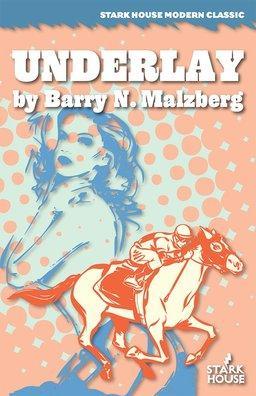
Back in March I read The End of Summer: Science Fiction of the 1950s, edited by Barry N. Malzberg and Bill Pronzini, and it reminded me what an astute observer of the field Barry Malzberg is. I mean, sure, most of us observe the genre. Malzberg has studied it, with a passion and understanding that only a handful will ever approach.He’s also a very prolific writer, and his non-fiction books The Engines of the Night and Breakfast in the Ruins: Science Fiction in the Last Millennium were both nominated for the Hugo Award. Sadly, much of his best work is currently out of print, so I was delighted to see his short comic masterpiece Underlay brought back in print by Stark House Press this month.
reprinted from the fantastic (in every sense) website Black Gate
black gate.com

Back in March I read The End of Summer: Science Fiction of the 1950s, edited by Barry N. Malzberg and Bill Pronzini, and it reminded me what an astute observer of the field Barry Malzberg is. I mean, sure, most of us observe the genre. Malzberg has studied it, with a passion and understanding that only a handful will ever approach.He’s also a very prolific writer, and his non-fiction books The Engines of the Night and Breakfast in the Ruins: Science Fiction in the Last Millennium were both nominated for the Hugo Award. Sadly, much of his best work is currently out of print, so I was delighted to see his short comic masterpiece Underlay brought back in print by Stark House Press this month.
Harry the Flat is dead and buried in the backstretch of Aqueduct Raceway. This is causing the Mob no end of trouble on the betting side, so Harry’s oldest and dearest friend — now carrying on with Harry’s widow, Gertrude nee Hawkins, in Harry’s absence, and in debt to the Mob $1,500 — is persuaded to dig him up after the eighth race. Tony Winner, low level mob boss, is very specific on this point, and to that end has had a time bomb surgically implanted in our hero’s thigh to impress upon him the urgency of this matter.So on this fateful day, off he goes to the Aqueduct in Queens, New York, with a cello case stuffed with a pick and a shovel, prepared to dig up the dubious remains of Harry the Flat so the Mob’s control of horserace betting is no longer compromised. His mind is filled with thoughts of Harry, of Gertrude, of his ex-wife, and all the schemes and plans and bets that led to this moment. It will be a long day for our hero. He has a lot to learn about horse racing.Underlay was published by Stark House Press on July 1, 2015. It is 146 pages, priced at $15.95 in trade paperback. There is no digital edition.
Published on July 19, 2015 08:20
Ed Gorman's Blog
- Ed Gorman's profile
- 118 followers
Ed Gorman isn't a Goodreads Author
(yet),
but they
do have a blog,
so here are some recent posts imported from
their feed.




